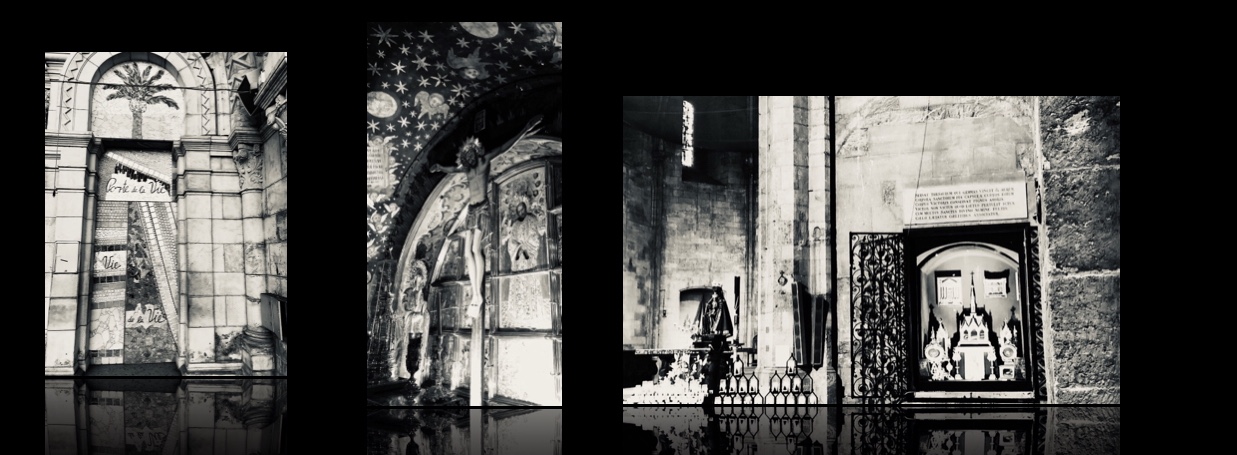Every traditional place of pilgrimage is not only a font of manifold graces but also an attic of vintage stories. For centuries, Catholics have been journeying to the Holy Infant of Prague in the Church of Our Lady of Victory and Saint Anthony of Padua to pray at the feet of the Christ Child asking, in faith and hope, for special blessings.
By the grace of God I had the opportunity to do the same in mid June, walking in the footsteps of the pilgrims who have gone before me – and learning some interesting details about the history of the church where one finds the altar of the Holy Infant of Prague.
A church built by the Bohemian protestants
During the time of the Protestant rebellion in the 16th century, the Catholics in Bohemia became a small minority. The growing Protestant communities of the Bohemian lands, on the other hand, began building new churches for their celebrations – among them a church erected for German Lutherans in the city of Prague and dedicated to the Most Holy Trinity in the year 1613, the very church which today houses the altar of the Holy Infant of Prague.
A victory attributed to the Blessed Virgin Mary
In May 1618, the Defenestration of Prague sparked the thirty years of war between Protestant and Catholic nations that plagued all of Europe. A Protestant assembly threw two Catholic lords, whom they perceived as Catholic hardliners of the counter-reformation, out of the window of the Bohemian Chancellory – yet the two lords miraculously survived. This incident led to the beginning of saber rattlings between the two religious camps. The Catholic Bohemian king Ferdinand II (1578-1637) was made Holy Roman Emperor in 1619, and the Bohemians put up a Calvinist as their king.
A couple of years later, the troops of the Catholic League, an alliance of Catholic nations “for the defence of the Catholic religion and peace within the Empire“ forged in July 1609 in Munich by the initiative of the Bavarian duke Maximilian I (1573-1651), met the army of the Bohemian Protestants in the Battle of the White Hill near Prague in November 1620.

A Carmelite brother from Spain joined the Catholic League to serve as priest for the soldiers. His name was Dominic a Jesu Maria (1559-1630), born as Miguel Ruzola y Lopez. He had joined the order of the Discalced Carmelites of Saint Teresa of Avila in the year 1589 and had founded Carmelite convents in Rome.
Dominic a Jesu Maria brought along a sacred image of the Holy Family from a chapel in Strakonice which Protestants had attempted to desecrate, mocking the Catholic veneration of the saints by punching out the eyes of all figures, including those of the Blessed Virgin Mary, except for Christ. It is said that this Carmelite priest blessed the Catholic troops with this sacred image, that he rode alongside the soldiers carrying a crucifix and that very same image, and that the Catholic soldiers stormed the hill of the Bohemian army with the battlecry Santa Maria.
The Catholic victory that followed was attributed to the intercession and help of the Blessed Virgin, analogous to the victory of the imperial fleet in the Battle of Lepanto in 1571. It reestablished the Catholic religion as the major denomination in the lands of the Czech people.
The sacred image of Strakonice was brought to Rome and placed in the church of one of the Carmelite convents founded by Dominic a Jesu Maria, and this church from then on was called Santa Maria della Vittoria – Saint Mary of Victory.
How the Discalced Carmelites obtained the church
Ferdinand II promised to establish two Carmelite monasteries in honor of the victorious Battle of the White Hill. One was raised in Vienna, the other in Prague where the emperor gave the Protestant church of the Most Holy Trinity to the order of Dominic a Jesu Maria, to the Discalced Carmelites, asking them to dedicate it to Our Lady of Victory and to Saint Anthony of Padua. Thus, the Carmelites moved into this church in the year 1624.

Where the statue of the Holy Infant of Prague comes from
Very fittingly, the statue of the Holy Infant of Prague is originally from Spain but no one knows its exact origin in time and place. What can be reconstructed though is how the Spanish statue ended up in Prague.
A Spanish lady by the name of Dona Isabella Manrique de Lara y Mendoza handed the statue to her daughter, Maria Manrique de Lara, as a gift for her wedding with the Bohemian nobleman Vratislav of Pernstein. Later, in the year 1628, this couple‘s daughter Polyxena bequeathed the statue to the Discalced Carmelites of Prague.

To discover these various historical threads was a sound enjoyment to me, as I visited this former Protestant church of the Most Holy Trinity, now dedicated to the Blessed Virgin Mary, on Trinity Sunday three years after receiving the sacrament of Holy Confirmation on this very feast day that closes the Octave of Pentecost – a day in the month of June which sealed a sheep raised Protestant (Lutheran) as a full member of the one holy sheepfold, of the one indivisible holy batch, bound from now on to the easy yoke and light burden of Christ and His Church so strongly, firmly, and indelibly that neither life nor death shall ever cut through it.
Our Lady of Victory, pray for us! Prazské Jezulátko, bless us!
